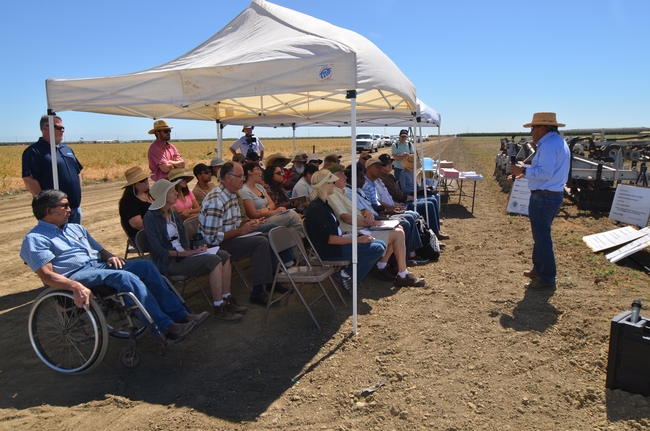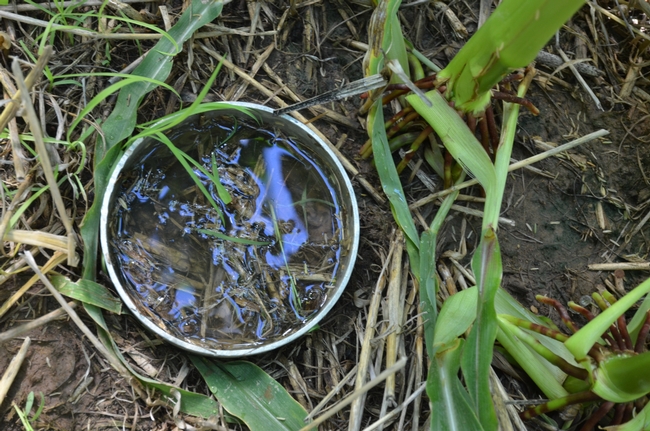Lessons from six California soil care farmers
Despite the growing interest in soil health in many parts of the country, the notion hasn't captured the imagination of most farmers in California. The Golden State's lackluster attention to soil care is likely due to “phenomenal yield increases over the past several decades, the sheer diversity of cropping systems, and widespread perception that California's environment and crop production mix doesn't lend itself to soil health improvements,” said Jeff Mitchell, UC Cooperative Extension agronomy specialist.
A series of farm visits this summer in the Central Valley prove this rationale wrong, Mitchell said. The farm visits were sponsored by the UC Conservation Agriculture Systems Innovation Center (CASI), USDA's Natural Resources Conservation Service and the California Association of Resource Conservation Districts. The farm visits showcased the soil health goals and experiences of six farmers who are familiar with soil care principles across a wide range of local cropping contexts.
The series of visits demonstrated the use of no-till and minimum tillage farming, cover cropping, enhancing the diversity of above-ground species and underground soil biology, surface residue preservation, and compost applications.
John Teixeira is a diversified farmer in Firebaugh working to develop integrated crop and livestock systems that are not reliant on external inputs. Pursuing a diverse rotation that includes alfalfa, cover crops, and a variety of heirloom grain crops that are marketed as both raw seed and value-added pasta, Teixeira is working to enhance soil function and fertility so that all external impacts are eliminated.
Michael Crowell and his son Adam grow silage crops near their Turlock dairy and dryland small grain crops using no tillage along Highway 4 in the rolling hills south of Dixon. They use no-till as a means to reduce soil water evaporation and to increase the water holding capacity of their soil, thereby enabling them to produce economically viable crops on the region's typical 14 inches of winter rainfall.
Darrell Cordova and his son Trevor of Denair also use no-tillage for their summer silage corn and winter small grain forage mixes and as a means for stabilizing the soil, adding surface residues, increasing infiltration and reducing runoff under their center pivot-irrigated crops growing on undulating terrain. These practices also cut costs and eliminate considerable labor.
Tom Willey of Madera uses compost applications ahead of each of his organic vegetable crops to build the nutrient-provision and water-holding capacities of his soils. His sustained dedication to these amendment applications and his farming goal of attempting to mimic natural systems in terms of active, high-functioning soil biology enable him to produce a great diversity of very high quality vegetables.
Alan Sano and Jesse Sanchez in Firebaugh have combined the conservation ag/soil care practices of reduced disturbance and cover crops for more than 10 years in their processing tomato fields. They report lower costs, improved soil tilth, and the ability to reduce nitrogen fertilizer inputs by about half.
“These six soil care farmers share an uncommon dedication to the principles that are at the core of soil health and conservation agriculture systems,” Mitchell said. “Each of them reported tangible value that they are receiving from their attention to caring for the soil and working to improve soil function.”
Mitchell and the network of organizations that are part of CASI now seek a new wave of farmers who are interested in evaluating conservation agriculture, climate-smart practices at their farms.
For information on how to become involved with farm performance monitoring and the educational activities, see the CASI website at http://casi.ucanr.edu/


